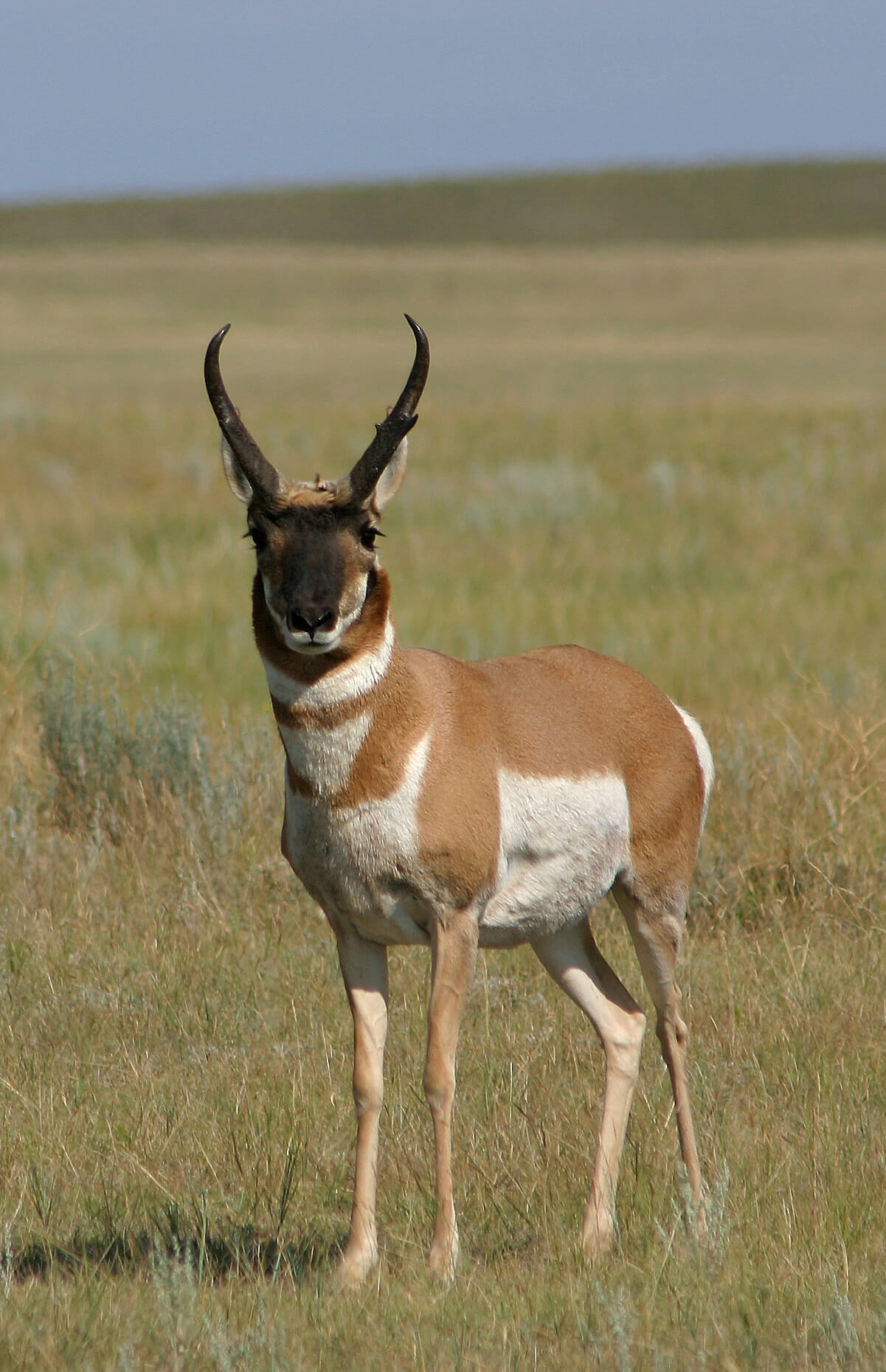There was a time not long ago when nothing could rival the untamed and breathtaking wildness of Montana’s legendary Northern Great Plains.
People lived lives inextricable from and fundamental to the ecology of the region, following and harvesting herds of bison, utilizing fire to attract wildlife and rejuvenate the grasslands, and cultivating and harvesting native vegetation. Later, landscape artists and explorers documented innumerable herds of bison and pronghorn that roamed the area, as well as grizzly bears, wolves, elk, beaver, sage grouse, ferruginous hawks, prairie dogs, vast flocks of migratory songbirds, and many other iconic wildlife. That biodiversity and abundance was killed off throughout the course of the nineteenth century, and while much of the shortgrass prairie habitat remains relatively intact and unplowed, most of the prairie’s iconic wildlife have been extirpated or remain only in nominal abundance. Today, temperate grasslands– like those in Montana– are one of the most threatened ecosystems in the world, but American Prairie represents an unprecedented opportunity to restore and conserve a vast expanse of the prairie ecosystem.

Mitigating Climate Change
Prairies play a fundamental role in sequestering carbon and mitigating climate change. Prairies store carbon underground in vast networks of roots, so they are not as susceptible to carbon release caused by wildfires. As a warming climate increases the frequency of fires across the planet, this “fire-proof” carbon storage may play an outsize role in mitigating greenhouse gas emissions that are driving global climate change. However, this ecosystem service is threatened by the conversion of native grassland to cropland. An estimated 57 million acres of prairie have been converted to crop agriculture since 2009. In the U.S. portion of the Northern Great Plains, 1.3 million acres of prairie are being tilled annually – releasing an amount of carbon dioxide into the air equivalent to approximately 9.3 million passenger cars every year.
Grassland Conservation
The Great Plains is one of only four places in the world that has immediate potential to conserve the temperate grassland prairie ecosystem. American Prairie is working to make that happen here in Montana. The International Union for Conservation of Nature states that less than five percent of grasslands are protected globally. According to the World Wildlife Fund, the Great Plains of the United States and Canada have lost a greater proportion of intact grassland in recent years than the Brazilian Amazon has lost rainforest. Wildlife populations and critical biological processes have disappeared or been suppressed over the last two centuries.
Among the temperate grasslands that remain, there are four regions that have immediate potential to be conserved at a landscape scale– Mongolian Steppe, the Kazakh Steppe, the Patagonian Steppe, and the Northern Great Plains. The International Union for Conservation of Nature has prioritized these regions as having the greatest potential of restoration. Without restoration and protection, we risk an ecosystem being lost forever.
Ecological Significance
Researchers have determined that 96 percent of the total weight of mammals on the planet are accounted for by humans and livestock. So aside from people and livestock, that means every other mammal you can name– blue whale, elephant, panda, bison, etc.– cumulatively amounts to only 4% of total mammal abundance by weight!
Earth is becoming less biodiverse by the hour, reducing the stability, integrity, resilience, and beauty of the entire planet. And even though wildlife needs to be restored, the habitat of the American Prairie region of the Great Plains remains intact and stable enough to support the same vast menageries of North American wildlife that they did a mere two centuries ago. Thus, “rewilding” even a relatively small fraction of the North American prairie has significance to biodiversity at a global scale.
Natural and Human History
It is important to us to recognize and honor all the people and cultures that make up the history of the prairie, and our region. Along with the abundance of wildlife that once existed in the region, human beings have been a part of what is now Montana for many millennia. Some of the earliest documented cultures in the region left a variety of archeological artifacts and sites such as buffalo jumps, grinding stones, cairns, and projectile points. Trappers, traders and hunters began traveling through and working in the region after the Lewis and Clark journey, and homesteaders and ranchers followed. Humans are an important species that will continue to impact the landscape and must be included in ecosystem restoration planning.
